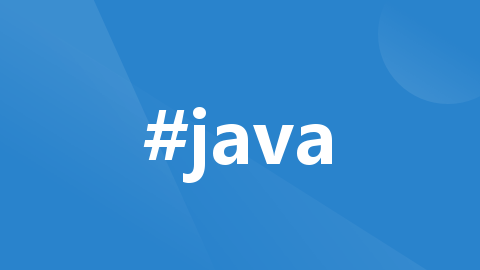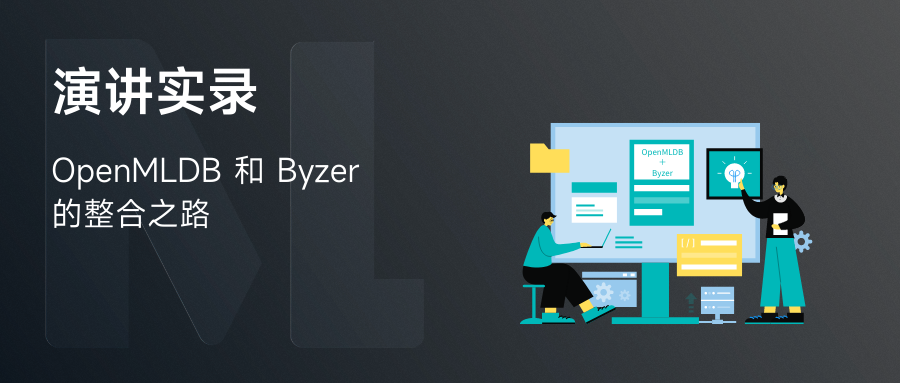Spring Boot实战之Rest接口开发及数据库基本操作
Spring Boot实战之Rest接口开发及数据库基本操作1、修改pom.xml,添加依赖库,本文使用的是mysql org.springframework.bootspring-boot-starter-data-jpamysqlmysql-connector-java2、修改配置文件applicat
Spring Boot实战之Rest接口开发及数据库基本操作
本文源码下载:
http://download.csdn.net/detail/sun_t89/9576427
1、修改pom.xml,添加依赖库,本文使用的是mysql
<dependency>
<groupId>org.springframework.boot</groupId>
<artifactId>spring-boot-starter-data-jpa</artifactId>
</dependency>
<dependency>
<groupId>mysql</groupId>
<artifactId>mysql-connector-java</artifactId>
</dependency>
2、修改配置文件application.properties,配置数据源及java持久层API相关信息
spring.datasource.url = jdbc:mysql://127.0.0.1:3306/springlearn
spring.datasource.username = root
spring.datasource.password = root
spring.datasource.driverClassName = com.mysql.jdbc.Driver
# 配置数据库
spring.jpa.database = MYSQL
# 查询时是否显示日志
spring.jpa.show-sql = true
# Hibernate ddl auto (create, create-drop, update)
spring.jpa.hibernate.ddl-auto = update
# Naming strategy
spring.jpa.hibernate.naming-strategy = org.hibernate.cfg.ImprovedNamingStrategy
# stripped before adding them to the entity manager)
spring.jpa.properties.hibernate.dialect = org.hibernate.dialect.MySQL5Dialect
3、添加数据模型 UserInfo.java
package com.xiaofangtech.sunt.bean;
import javax.persistence.Entity;
import javax.persistence.GeneratedValue;
import javax.persistence.GenerationType;
import javax.persistence.Id;
import javax.persistence.Table;
import javax.validation.constraints.NotNull;
@Entity
@Table(name="t_user")
public class UserInfo {
@Id
@GeneratedValue(strategy = GenerationType.AUTO)
private int id;
@NotNull
private String name;
private String password;
private String salt;
private String role;
public int getId() {
return id;
}
public void setId(int id) {
this.id = id;
}
public String getName() {
return name;
}
public void setName(String name) {
this.name = name;
}
public String getPassword() {
return password;
}
public void setPassword(String password) {
this.password = password;
}
public String getSalt() {
return salt;
}
public void setSalt(String salt) {
this.salt = salt;
}
public String getRole() {
return role;
}
public void setRole(String role) {
this.role = role;
}
}
4、添加数据访问接口类 UserInfoRepository.java
package com.xiaofangtech.sunt.repository;
import java.util.List;
import org.springframework.data.jpa.repository.Query;
import org.springframework.data.repository.CrudRepository;
import com.xiaofangtech.sunt.bean.UserInfo;
public interface UserInfoRepository extends CrudRepository<UserInfo, Integer>{
UserInfo findUserInfoById(int id);
List<UserInfo> findUserInfoByRole(String role);
@Query(value = "select * from t_user limit ?1", nativeQuery =true)
List<UserInfo> findAllUsersByCount(int count);
}
5、添加UserController.java,添加用户信息的增删改查操作
package com.xiaofangtech.sunt.controller;
import java.util.List;
import org.springframework.beans.factory.annotation.Autowired;
import org.springframework.data.jpa.repository.Modifying;
import org.springframework.web.bind.annotation.RequestBody;
import org.springframework.web.bind.annotation.RequestMapping;
import org.springframework.web.bind.annotation.RestController;
import com.xiaofangtech.sunt.bean.UserInfo;
import com.xiaofangtech.sunt.repository.UserInfoRepository;
import com.xiaofangtech.sunt.utils.ResultMsg;
import com.xiaofangtech.sunt.utils.ResultStatusCode;
@RestController
@RequestMapping("user")
public class UserController {
@Autowired
private UserInfoRepository userRepositoy;
@RequestMapping("getuser")
public Object getUser(int id)
{
UserInfo userEntity = userRepositoy.findUserInfoById(id);
ResultMsg resultMsg = new ResultMsg(ResultStatusCode.OK.getErrcode(), ResultStatusCode.OK.getErrmsg(), userEntity);
return resultMsg;
}
@RequestMapping("getusers")
public Object getUsers(String role)
{
List<UserInfo> userEntities = userRepositoy.findUserInfoByRole(role);
ResultMsg resultMsg = new ResultMsg(ResultStatusCode.OK.getErrcode(), ResultStatusCode.OK.getErrmsg(), userEntities);
return resultMsg;
}
@Modifying
@RequestMapping("adduser")
public Object addUser(@RequestBody UserInfo userEntity)
{
userRepositoy.save(userEntity);
ResultMsg resultMsg = new ResultMsg(ResultStatusCode.OK.getErrcode(), ResultStatusCode.OK.getErrmsg(), userEntity);
return resultMsg;
}
@Modifying
@RequestMapping("updateuser")
public Object updateUser(@RequestBody UserInfo userEntity)
{
UserInfo user = userRepositoy.findUserInfoById(userEntity.getId());
if (user != null)
{
user.setName(userEntity.getName());
userRepositoy.save(user);
}
ResultMsg resultMsg = new ResultMsg(ResultStatusCode.OK.getErrcode(), ResultStatusCode.OK.getErrmsg(), null);
return resultMsg;
}
@Modifying
@RequestMapping("deleteuser")
public Object deleteUser(int id)
{
userRepositoy.delete(id);
ResultMsg resultMsg = new ResultMsg(ResultStatusCode.OK.getErrcode(), ResultStatusCode.OK.getErrmsg(), null);
return resultMsg;
}
}
6、封装返回的结果
添加ResultMsg.java
package com.xiaofangtech.sunt.utils;
public class ResultMsg {
private int errcode;
private String errmsg;
private Object p2pdata;
public ResultMsg(int ErrCode, String ErrMsg, Object P2pData)
{
this.errcode = ErrCode;
this.errmsg = ErrMsg;
this.p2pdata = P2pData;
}
public int getErrcode() {
return errcode;
}
public void setErrcode(int errcode) {
this.errcode = errcode;
}
public String getErrmsg() {
return errmsg;
}
public void setErrmsg(String errmsg) {
this.errmsg = errmsg;
}
public Object getP2pdata() {
return p2pdata;
}
public void setP2pdata(Object p2pdata) {
this.p2pdata = p2pdata;
}
}
package com.xiaofangtech.sunt.utils;
public enum ResultStatusCode {
OK(0, "OK"),
SYSTEM_ERR(30001, "System error");
private int errcode;
private String errmsg;
public int getErrcode() {
return errcode;
}
public void setErrcode(int errcode) {
this.errcode = errcode;
}
public String getErrmsg() {
return errmsg;
}
public void setErrmsg(String errmsg) {
this.errmsg = errmsg;
}
private ResultStatusCode(int Errode, String ErrMsg)
{
this.errcode = Errode;
this.errmsg = ErrMsg;
}
}
7、工程整体结构
8、运行测试,本文中测试使用的是user表,其中包含一些密码等信息未做处理,这个读者自行进行JsonIgnore处理
提供以下5个接口
http://localhost:8080/user/adduser
http://localhost:8080/user/updateuser
http://localhost:8080/user/getuser?id=13
http://localhost:8080/user/getusers?role=Manager
http://localhost:8080/user/deleteuser?id=13
测试运行结果
adduser接口
updateuser接口
getuser接口
9、调用以上接口时执行数据库操作时,会在内部转化为以下SQL语句
Hibernate: insert into t_user (name, password, role, salt) values (?, ?, ?, ?)
Hibernate: select userinfo0_.id as id1_0_, userinfo0_.name as name2_0_, userinfo0_.password as password3_0_, userinfo0_.role as role4_0_, userinfo0_.salt as salt5_0_ from t_user userinfo0_ where userinfo0_.id=?
Hibernate: update t_user set name=?, password=?, role=?, salt=? where id=?
Hibernate: select userinfo0_.id as id1_0_, userinfo0_.name as name2_0_, userinfo0_.password as password3_0_, userinfo0_.role as role4_0_, userinfo0_.salt as salt5_0_ from t_user userinfo0_ where userinfo0_.id=?
Hibernate: select userinfo0_.id as id1_0_, userinfo0_.name as name2_0_, userinfo0_.password as password3_0_, userinfo0_.role as role4_0_, userinfo0_.salt as salt5_0_ from t_user userinfo0_ where userinfo0_.role=?
Hibernate: select userinfo0_.id as id1_0_0_, userinfo0_.name as name2_0_0_, userinfo0_.password as password3_0_0_, userinfo0_.role as role4_0_0_, userinfo0_.salt as salt5_0_0_ from t_user userinfo0_ where userinfo0_.id=?
Hibernate: delete from t_user where id=?
10、数据库操作
JPA模块支持将查询字符串定义在方法名称中
如上例中
根据id值查询UserInfo实例
UserInfo findUserInfoById(int id);
根据role查询UserInfo实例
List<UserInfo> findUserInfoByRole(String role);
也可以直接使用原生的数据库语句
如下使用@Query注解
@Query(value = "select * from t_user limit ?1", nativeQuery =true)
List<UserInfo> findAllUsersByCount(int count);
11、在方法名中添加查询字符串参考
更多推荐
 已为社区贡献1条内容
已为社区贡献1条内容

















所有评论(0)